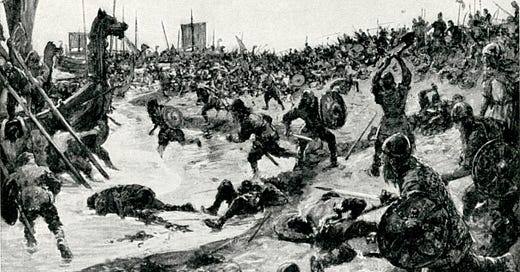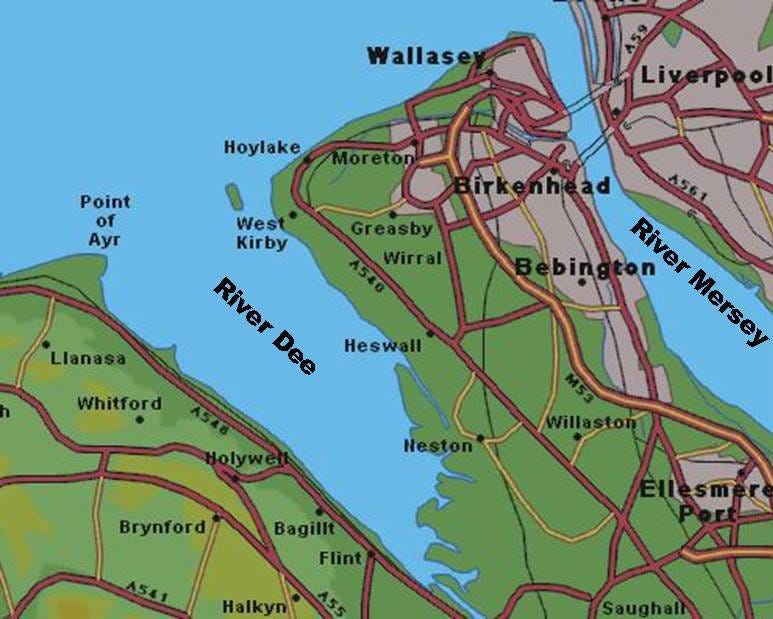We know a lot about the Anglo-Saxon period overall.
There is a host of archaeological finds, records, etc. from the era, leading us to a healthy comprehension of the narrative from the arrival of the mytho-historical Hengist and Horsa, to the defeat of King Harold II Godwinson at the Battle of Hastings.
However, there are points that we’re not entirely sure about.
A case in point is below:
Where was the Battle of Brunanburh?
The Battle of Brunanburh in 937 AD was a pitched fight between King Athelstan of England and an alliance of the King of Scots, King of Dublin, and King of Strathclyde.
The battle was the culmination of events arising over several years, with King Athelstan emerging as the victor. Athelstan was the eldest son of King Edward the Elder, and a nephew to Lady Athelflead of the Mercians, who were both children of King Alfred the Great. Athelflead and King Edward had retaken much of the lands of the Danelaw, as far north as the River Humber. Edward died in 926 AD, and the duty of creating a united kingdom of all Anglo-Saxons - or England - was now in Athelstan’s hands.
In 927 AD, the king of Norse-led Jorvik had died, though was married to Athelstan’s sister. Taking advantage of the situation, Athelstan took over Jorvik, and had secured the submission of the Earl of Bamburgh, who ruled northern Northumbria unmolested by the Norsemen.
Having secured rule over all settled Anglo-Saxon lands, Athelstan styled himself King of the English at Eamont Bridge in 927 AD. He had achieved the dream of his grandfather, Alfred the Great, and stands to this day as the first king of England. There was no independent Mercia, Wessex, East Anglia, or Northumbria - but for the first time just one king over all Anglo-Saxons. At the same time, he gained the overlordship over Scotland, Strathclyde and the great king of Deuhrbath in Wales, Hywel Dda. He not only was king of England, but styled himself Emperor of all Britain.
In response to this agreement, the King of Scots pulled from it in 935 AD, leading to Athelstan’s invasion to restore the deal. Tired of being subdued by the new English king, Scotland, Strathclyde, and Norse-led Dublin, all united to fight Athelstan. And this fight was held at Brunanburh.
The thing is - we don’t know where Brunanburh was.
We know that it happened. There are records both of Anglo-Saxon and Celtic origin, depicting the battle from either perspective.
And we know that the battle was formative in ensuring the newly created England could survive as a united realm of all Anglo-Saxons. Certainly, Athelstan’s army would have comprised Mercians, Wessexians, Kentish, and East Anglians. It may also have included ethnic Norsemen, who lived in former Danelaw areas but were by nationality and allegiance English by swearing fealty to King Athelstan. By the 930s, decades after the Great Heathen Army’s arrival, ethnic Anglo-Saxons and Norse would have intermingled and in some areas such as Jorvik have formed a hybrid culture.
There are several contenders for the location of Brunanburh.
The noted Anglo-Saxonist and television documentary presenter Michael Wood - in his seminal “In Search of the Dark Ages - mentioned Tilsley Forest in Yorkshire as a site. Bromborough in the Wirral is another cited locale.
Others yet have mentioned Yorkshire, the East Midlands, or even as far south as Oxfordshire and Hampshire.
An article here cites Liverpool as a location, which is right across the Mersey from the Wirral Peninsula.
Either way, Brunanburh stands as a major battle not only in Anglo-Saxon history, but British history, and its locating will help further our understanding of the era and ourselves as an English people.
Moreover, the Battle of Hastings is seen as rightful watershed in our history. Though Brunanburh was arguably as big an alteration. England was literally a decade old as a unified polity, and Brunanburh helped secure its longevity and reality under a single king.
Maybe Brunanburh should thus be seen as pivotal as Hastings, Bosworth Field, and Naseby in English history.




